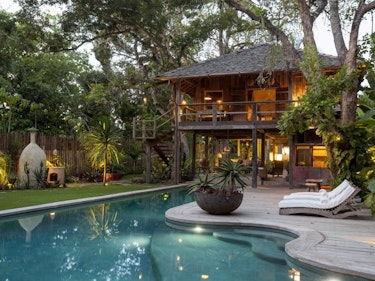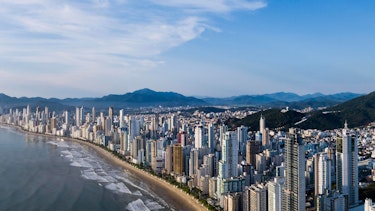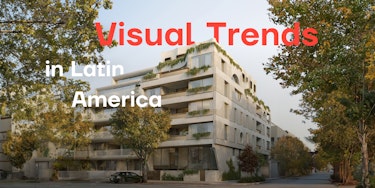Latin America’s luxury real estate sector is not just growing-it’s evolving, powered by a unique fusion of cultural storytelling, visual innovation, and robust economic fundamentals. As the region’s market draws increasing attention from global developers, architects, and marketers, understanding the deeper currents behind its visual codes and commercial strategies is essential. This extended analysis explores the interplay of market trends, demographic shifts, and branding innovation-and why Latin America’s approach is shaping the future of premium real estate worldwide.
Market Momentum
Sustained Growth and Investor Confidence
The fundamentals of Latin America’s real estate sector remain robust, with steady demand across residential, commercial, and retail segments. Fitch Ratings projects continued revenue and EBITDA growth for 2025, underpinned by stable demand, expansion projects, and mergers and acquisitions. The region’s residential real estate market alone is expected to reach USD 517.52 billion in 2025, growing at a CAGR of 8.32% to USD 771.74 billion by 20307. South America’s total real estate market is projected to hit US$19.57 trillion by 2025, with residential properties dominating the landscape.
Urbanization and Demographic Shifts
Rapid urbanization is a defining force. With a population of 665 million and rising, Latin America’s cities are absorbing millions of new residents each year, intensifying demand for high-quality urban housing. Cities like Mexico City have seen property values nearly double the national average, driven by migration and the expanding middle class. This demographic dynamism is not just fueling construction-it’s shaping the very nature of what is built and how it’s marketed.
Luxury Segment Outpaces Global Peers
The luxury tier is particularly buoyant. In 2024, Latin America and the Caribbean saw a 6.3% gain in luxury real estate values, outpacing North America’s 2.4%. Demand for “ready to move-in” upscale residences is surging, reflecting a shift toward immediacy and convenience among affluent buyers. This appetite is further amplified by international interest, especially from Latin American buyers investing in global markets like Spain, where they now represent around 50% of luxury home purchasers in key cities.

Credit: Spear's Magazine
Visual Codes
Materiality and Place-Making
Latin American real estate visuals are distinguished by their tactile materiality-stone, wood, clay, and textiles-anchoring projects in local tradition while signaling contemporary luxury. This material authenticity is not merely decorative; it’s a strategic response to a global market that increasingly values sustainability, craftsmanship, and a sense of place.
Emotional Warmth and Community
Imagery in Latin American campaigns is suffused with warmth: natural light, lush greenery, and communal spaces dominate. These visuals evoke not just luxury, but belonging. The message is clear: these are not isolated enclaves, but vibrant communities rooted in local culture. This approach stands in stark contrast to the impersonal minimalism of many Western luxury campaigns.
Cultural Symbolism and Storytelling
Developers and marketers are adept at weaving cultural symbolism into their visual narratives. Indigenous motifs, colonial architectural references, and local artisan collaborations are common, creating a visual language that is both aspirational and authentic. Storytelling is often documentary in style, featuring real families, artisans, or community events-humanizing the brand and deepening emotional resonance.

Credit: JamesEdition
Why Global Audiences Are Taking Note
A Blueprint for Differentiation
International developers, especially from the Middle East, Australia, and the UK, are increasingly looking to Latin America for inspiration. The region’s approach offers a compelling alternative to global homogeneity, providing a blueprint for differentiation in crowded premium markets. As buyers become more discerning, generic opulence is losing ground to authenticity and narrative depth.
Lessons in Place-Making and Identity
Latin America’s success lies in its ability to turn real estate into cultural placemaking. Projects are positioned not just as assets, but as destinations-each with a unique story, visual identity, and community ethos. This is particularly relevant for developers in regions with diverse populations or emerging luxury markets, where place-making and narrative can be powerful tools for value creation.

Credit: Mexico City hotels
Standout Campaigns and Branding Innovation
Integration of Local Artisans and Artists
Many high-end developments commission local artists and craftspeople, integrating their work into both the built environment and the marketing narrative. This not only supports local economies but also imbues projects with a sense of authenticity that resonates with global buyers.
Documentary-Style Visuals
Rather than relying solely on CGI or staged photography, campaigns increasingly use real photography and video to showcase the lived experience of their spaces. This approach builds trust and fosters a deeper emotional connection with prospective buyers.
Hybrid Aesthetics
Branding often blends modern architectural lines with traditional materials and motifs, creating a visual language that is both forward-looking and rooted in history. This hybrid aesthetic appeals to buyers seeking both innovation and heritage.

Credit: Por Homme
Market Dynamics: Beyond the Visual
Economic Growth and Middle-Class Expansion
Brazil’s economy is projected to grow by 2%, and Mexico’s by up to 2.5% in 2025. This economic expansion is fueling job creation and rising disposable incomes, enabling more families to enter the housing market. The expanding middle class is a crucial driver, particularly in Mexico, where it represents nearly half of all households and is expected to grow by 3.8 million by 2030.
Supply Constraints and Rising Prices
Demand continues to outpace supply, especially in prime urban locations. In markets like Madrid-where Latin American buyers are increasingly dominant-the shortage of new developments and quality renovation opportunities is pushing prices higher. This supply-demand imbalance is mirrored in Latin America’s own luxury hubs, where limited inventory is a persistent challenge.
Resilience Amid Global Uncertainty
Latin America’s real estate sector is marked by financial stability, manageable leverage, and strong liquidity profiles. Even as global markets face headwinds, the region’s fundamentals remain solid, supported by healthy capital access and stable net operating income.

Credit: Dezeen
Latin America’s real estate boom is not merely a regional phenomenon - it is a laboratory for the future of premium real estate branding. By decoding and adapting the region’s visual codes, international players can position their own projects more effectively, creating not just buildings, but destinations that resonate with the values and desires of a new generation of buyers and investors.
